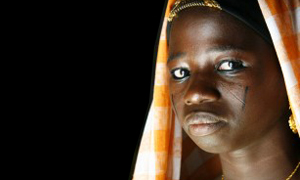
By Yemurai Nyoni
London – All Africa
What if there was there was a practice that, if ended, could improve the lives of millions of women and girls worldwide? Every year, 14 million girls are married before the age of 18 inmost cases without their consent and with severe consequences for their health. Child marriage not only holds women and girls back, it holds back our efforts to make the world a safer and healthier place for everyone.
World leaders, governments and global health experts are gathering in Johannesburg for the 2014 PMNCH Partners’ Forum – a major conference on maternal, child and newborn health – to discuss the world we want by 2030. Ending child marriage must be a core theme of these discussions.
As a youth advocate from Zimbabwe, I see every day what young people can achieve when they are given the chance to decide for themselves. Ending child marriage has the potential to unlock immense gains for women and girls globally. Now more than ever, we need to make sure that it is a priority for us all.
An unacceptable practice
We have witnessed great advances in maternal and newborn child health under the Millennium Development Goals (MDGs) but the continuing practice of child marriage has prevented adolescent girls from enjoying the fruits of our efforts.
Women and girls remain at grave risk from the threat of early and forced marriage. Complications in pregnancy and childbirth remain the leading cause of death for adolescent girls in low and middle income countries (WHO, 2012). 90% of adolescent pregnancies in developing countries are to girls who are already married (UN, 2011).
Imagine being one of the 39,000 girls married off every day, forced to leave school and forgo your childhood to take up adult responsibilities before you are physically, financially, intellectually and psychologically ready to do so.
Soon, you are pressured into sexual activity and are expected to bear children. You may not even understand how your body functions yet, let alone know that you have a right to access contraception or where those services may be available. You are forced into becoming a mother while you are still a child yourself.
Childbirth is dangerous for girls. Their bodies are not ready for the toll of pregnancy, and their wellbeing is also threatened by the lack of reproductive and obstetric care in rural areas. Girls who give birth before 15 are five times more likely to die in childbirth than women in their twenties (UNFPA, 2005).
Pushing an agenda for change
The fact that child marriage is a direct hindrance to our development efforts – having slowed down progress on 6 out of 8 MDGs – should be a core preoccupation of governments as they decide on a new development framework in the coming months.
Encouragingly, the African Union last month launched its first campaign to end child marriage across Africa, acknowledging the crippling impact of the practice on Africa’s development and the need for action across the continent.
The PMNCH Partners’ Forum is a chance to tell world leaders, governments and maternal health experts that the health of millions of women and girls depends on ending child marriage.
So, what can governments do?
Invest in adolescent girls’ health
Adolescence is a crucial moment in a girl’s life, one that marks their passage into adulthood. It’s important that sexual and reproductive health services address girls’ needs and concerns at this stage in their lives, providing them with the knowledge they need to make their own decisions about their bodies.
Change and enforce laws
It’s not enough for child marriage to be illegal. We want states to harmonise customary and civil marriage laws to ensure that no child below the age of 18 years is given in marriage. Child marriage must be made illegal across the globe and states need to be willing to do all that it takes to eliminate the practice.
Keep girls in school without exception
Child marriage is fuelled by existing social injustices experienced by women and girls including lack of prioritisation of girls’ education in families. Not only is this an injustice in itself, it also leaves girls vulnerable to marriage.
Keeping girls in school significantly reduces their chances of marrying early and empowers them with the information and skills necessary for them to make economic, social and political progress. This is why girls’ primary and secondary education must not be optional but made compulsory and why governments, and development agencies need to make the necessary investments to prioritise girls’ education.
Work with community leaders
Communities are at the heart of ending child marriage. Religious and traditional leaders often have a hand in officiating and legitimising child marriage. We must partner with these community leaders, educating them on the dangers of child marriage and empowering them to bring positive change within their spheres of influence to end the practice.
Partner with youth
Ending child marriage should be youth focused because young people, especially girls and young women, are the victims of child marriage. Our meaningful involvement as direct beneficiaries of child marriage programs will ensure that efforts to end child marriage are well-directed and delivered in a way that does not hold us back.
I have set up “Rising Birds”, a youth-led project that is pushing for the revision and the enforcement of laws to end child marriage in Zimbabwe. We should trust young people to advocate for their own rights and lead social change movements in their own communities. We are well-placed as young people in making and presenting the case to end child marriage to policy makers, traditional and religious leaders.
Protecting the rights of young women and girls at all costs
We all agree that the rights of women and girls must be protected, but it is our joint responsibility to ensure that commitments to end child marriage turn into action as we build a future for women and girls free of child marriage.



